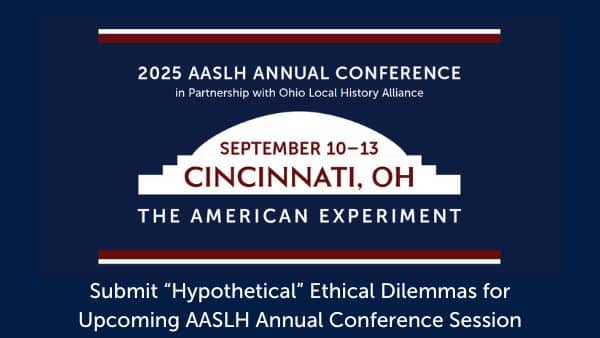 Sure, I’m dating myself by bringing up the rabbit who wants all the good stuff the kids have. But it’s not such a silly question. Are we giving our adult audiences all the careful attention we give our youngest visitors?
Sure, I’m dating myself by bringing up the rabbit who wants all the good stuff the kids have. But it’s not such a silly question. Are we giving our adult audiences all the careful attention we give our youngest visitors?
At AASLH 2012, consultant Beverly Sheppard, Rhonda Newton of the PA Heritage Society, and Robin Grenier of the University of Connecticut led a jam-packed and talkative “Conversation on Adult Learners.”
Since the 1992 publication of Excellence and Equity, museums have successfully asserted their function as educational institutions. This often meant emphasizing school services. As school curricula got more prescriptive and outcome-oriented, so did we, supporting K-12 standards and staffing with museum specialists in elementary and secondary education.
 During two decades of high birthrates, family audiences, too, seemed to be key to healthy attendance, so we filled out the calendar with summer programs, school vacation weeks, and family weekend events. Museums are now experts at youth learning, both in formal and free-choice programs.
During two decades of high birthrates, family audiences, too, seemed to be key to healthy attendance, so we filled out the calendar with summer programs, school vacation weeks, and family weekend events. Museums are now experts at youth learning, both in formal and free-choice programs.
But meanwhile, we sort of neglected our adult audiences. We often lump adults in with what we call the “general public,” expecting the foundational interpretation and basic daily programming to meet nearly all of their needs.
 Fortunately, that’s changing. As the crowded session attested, more of us are taking adult audiences every bit as seriously as we take youth. Museums are creating new positions tasked with focusing on adult audiences. We’re seeking out visitor research on what makes museums valuable to adults, such as the recent work by Reach Advisers on meaningful museum experiences. We’re absorbing the rapidly growing body of knowledge on adult cognitive development and learning preferences. And we’re asking ourselves how to adapt our museum education practice to better serve lifelong learners.
Fortunately, that’s changing. As the crowded session attested, more of us are taking adult audiences every bit as seriously as we take youth. Museums are creating new positions tasked with focusing on adult audiences. We’re seeking out visitor research on what makes museums valuable to adults, such as the recent work by Reach Advisers on meaningful museum experiences. We’re absorbing the rapidly growing body of knowledge on adult cognitive development and learning preferences. And we’re asking ourselves how to adapt our museum education practice to better serve lifelong learners.
This was a session organized not around answers, but around pressing questions. Among the topics discussed:
How do adults learn, and what does that mean for program design? What formats, conditions, and techniques result in satisfying experiences for self-directed adults? We talked about strategies such as letting a tour group select their own experience, after being offered various options by docent or educator. We also identified an important area of tension between our aim to offer research-based, conversational experiences with adults’ expectations for traditional one-way learning.
 How do subgroups of adult audiences differ from each other? Adults aren’t all alike! There are many ways to “slice” this audience into sectors, including generational theory, demographics, participation habits, and interest clusters.
How do subgroups of adult audiences differ from each other? Adults aren’t all alike! There are many ways to “slice” this audience into sectors, including generational theory, demographics, participation habits, and interest clusters.
What’s the best way to teach and train our volunteers? Docents and volunteers are also part of our lifelong learning audience. How do we balance their desire for high-level content learning with training in museum pedagogy?
What makes adults comfortable? At many sites, we introduce difficult topics and seek to create safe spaces for hard discussions. Participants shared successes based on beginning conversations with an acknowledgement that it can be difficult to talk about some sensitive subjects.
Where can we learn more? The literature in our field is growing. The book Adult Museum Programs:Designing Meaningful Experiences, by Bonnie Sachatello-Sawyer et al, is a practical educator handbook and a good place to start learning. The Spring 2008 issue of the Journal of Museum Education, guest-edited by Dr. Grenier, is dedicated to Adult Learning in Museums.
I’m excited that we’re really starting to pay attention to adult learning. Adults should be as close to the heart of our practice as children are. They’ re thoughtful decisionmakers, eager self-motivated learners, and our most passionate advocates and supporters. They come to us voluntarily and with high hopes. Teaching adults is rewarding: as educators, we can be present for moments of insight and deep emotional connection, hear stories held close over a lifetime, and hear about the impact of our work directly and clearly from those who are touched by it.
What is your museum doing for adult learners? What are you reading that helps you reach adults? And what questions are you asking?



